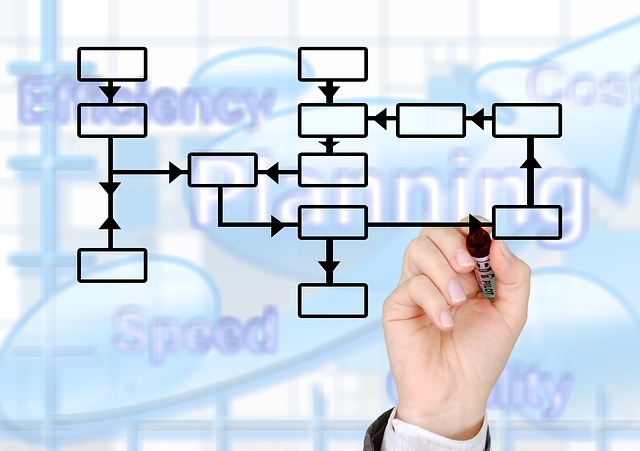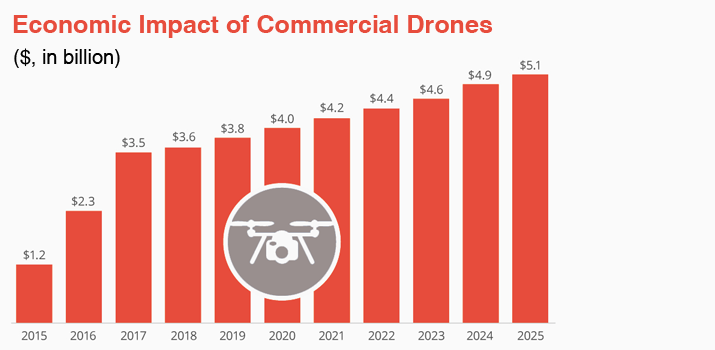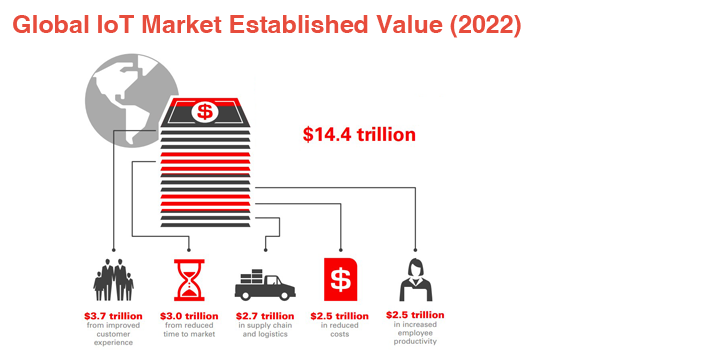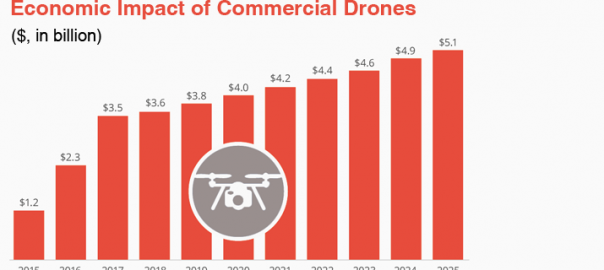— July 19, 2017

geralt / Pixabay
By 2024, the global logistics market will top $ 15.5 trillion (up from $ 8.1 trillion in 2015). Its growth is primarily driven by the increasing usage of new technology in logistics including the Internet of Things, AI-powered analytics software, and enterprise applications. Discover how top logistics companies leverage new tech for business growth and…learn from the best!
Top 5 logistics technology trends
- Drone- and droid-assisted delivery. Drones became logistics and transportation companies’ poster child a few months ago when tycoons like Amazon and Walmart began experimenting with the smart gadgets to streamline inventory tracking and small package/in-store delivery. Now IT experts predict the drone market will be growing at a CAGR of 20.7%, reaching $ 22.15 billion by 2020. Some analysts believe it is droids (tiny delivery robots that travel on sidewalks, are less expensive than drones and do not require FAA certification) that hold the most promise for logistics, retail and e-commerce companies. Either way, robot-assisted delivery solutions will help businesses solve the last mile problem (the final leg of a parcel’s journey) which accounts for 30-40% of the total delivery cost and reduce delivery fees to as little as 10 cents per mile.

- Self-driving vehicles. When Uber acquired Otto, a Silicon Valley self-driving technology start-up, in August 2016, no one had thought the company would make its first driverless commercial delivery two months later. Composed of laser detection units, a high-precision camera and analytics software which turns sensor data into driving directions, Otto’s solution can be a game-changer for the US logistics industry which currently estimates truck driver shortage at 48 thousand employees (175 thousand by 2024). According to Lior Ron, co-founder of Otto, self-driving vehicles will enable logistics operators to lower freight costs by 40% per kilometer and reduce the number of traffic accidents involving trucks;
- Warehouse robotics. Amazon employs 45 thousand robots which pick orders and restock shelves; the Next Gen workforce reportedly saves the company $ 22 million per fulfillment center. Over 140 US hospitals now use TUG robots that deliver meals, medications and laboratory supplies to nursing stations. RightHand Robotics went even further and invented a robot which recognizes different types of objects, adjusts its grip accordingly and can pick up to 600 items per hour (on par with a human warehouse worker). According to Pavel Shylenok, CTO at R-Style Lab, there’s only one thing that keeps the new warehouse technology from mass adoption in logistics: it is the high cost of innovative hardware/software technologies like machine learning which enables RightHand to identify individual items. However, logistics companies no longer have to overhaul their IT infrastructures to make robots part of their digital strategy. What’s more, the price of automated labor has decreased by half since 1990;
- Augmented Reality. Having successfully tested its Vision Picking Program in the Netherlands, DHL Supply Chain partnered with Google, Ubimax and Vuzix to bring Augmented Reality to US logistics. The DHL solution is in fact similar to Google Glass: the language-independent headset displays where items should be placed on the trolley and helps workers perform picking operations (which amount for 11% of total logistics expenditures) 30% faster;
- Predictive analytics and Uber-like delivery platforms. The use of predictive analytics solutions has become one of the biggest technology trends in transportation and logistics industry and is no longer limited to data-based route planning, prevention of fuel theft and other custom web application development Inexpensive sensors (less than $ 10 per unit) have given rise to smart warehouse systems enabling workers to detect the exact position of a product at any time. This summer, Amazon is expected to release an Uber-like application which will connect truck drivers to shippers, thus eliminating the need for third-party brokers who charge enormous fees. The company is also experimenting with crowdsourced logistics (which is a great alternative to immature drones) and the “anticipatory shipping” method (that is, shipping a product before an order is placed) based on previous customer shopping activity. Similar strategy has been implemented by P&S Transportation, a US trucking company that has crafted a BI tool which analyzes revenue per freight commodity, identifies the most profitable customers and highlights new sales opportunities.

All in all, logistics companies’ major focus is now increased efficiency. Although we might be a few years away from 100% automated inventory management and package delivery due to technology and statutory limitations, there’s no denying the fact that logistics has already become a data-centric industry. Also, logistics and transportation companies embrace sustainability to reduce carbon foot print, meet customer demand and boost revenue. Early studies prove that customers are willing to pay 5% more for products shipped sustainably, while thorough inventory management and prioritization of efficiency efforts can help businesses shorten their supply chains by up to 65%.
Ready to start digital transformation? In this case, you should address a reliable software vendor follows logistics Information Technology trends. Provided your partner dives into your business domain, conducts proper business analysis, identifies pain points and comes up with the right solution, your project is doomed to success!
Business & Finance Articles on Business 2 Community
(79)
Report Post






